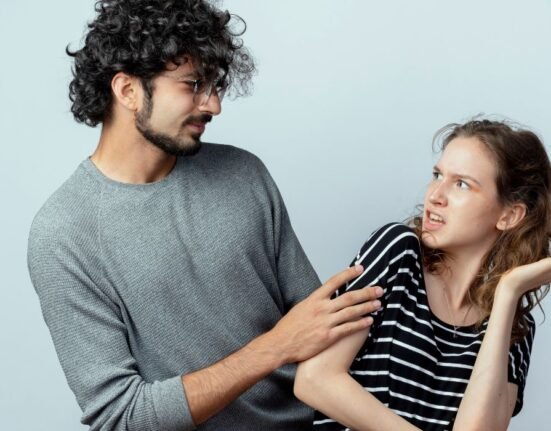Relaxation is one of the basic needs of a fast, busy world. Stress makes its mark on the physical and mental health of man, and if he isn’t provided with an avenue to control it, they may suffer from an anxiety disorder, and sleep disorder, and their blood pressure levels are much higher than normal. As such, relaxation techniques in managing everyday stress can alleviate the well-being of people. This article provides several relaxation techniques, namely deep breathing, progressive muscle relaxation, guided imagery, meditation, yoga, and mindfulness. All of these are described in plain words.
Relaxation Techniques
1. Deep Breathing Exercises
Deep breathing is a very simple technique that can be performed at any time and anywhere. It involves slow and deep breaths with emphasis on every inhale and exhale to soothe the mind and body. How It Works: The onset of stress promotes shallow, fast breathing. This makes one’s anxiety feelings even stronger. Deep breathing, regulates the pace of breathing and enables a deeper intake of oxygen and promotes the message that should pass to the nervous system-well, that it must relax. How to Do Deep Breathing:
- Sit or lie comfortably.
- Close your eyes and breathe in through your nose to the count of four.
- Hold for a moment and breathe out through your mouth to the count of four.
- Repeat this several times and notice the sensation of each breath.
According to different studies, deep breathing can reduce stress and anxiety by many folds (Jerath et al., 2015).
2. Progressive Muscle Relaxation (PMR)
Progressive Muscle Relaxation, or PMR, is the technique by which one tenses and then relaxes the different muscle groups of the body. It identifies regions of tension and helps induce relaxation in that specific area. How PMR Works: This technique requires one to tense and release every group of muscles so that one may be physiologically relaxed. This method also requires focused attention so that the mind is distracted from stressful thoughts. How to Practice PMR:
- Sit or lie comfortably.
- Start with your toes, contracting them for five seconds, then relaxing.
- Do this all the way up through the body: feet, calves, thighs, abdomen, arms, and finally the face.
- As you release each muscle, you are to pay attention to the sensation of releasing.
Research has shown PMR to be an effective intervention in reducing stress, and even lowering blood pressure (McCallie, Blum, & Hood, 2006).
3. Guided Imagery
Guided imagery is the act of visualizing peaceful, calming images to help a person relax. It works in the sense that it allows one to focus on good images while distracting the mind from worrisome thoughts. How it works: The brain sometimes responds to imagery as if it is occurring, so picturing peaceful scenes can make a person feel relaxed. Guided imagery can also be an outlet by taking individuals out of anxious thoughts. To practice guided imagery:
- Sit comfortably with your eyes shut.
- Imagine any peaceful place, be it a beach, forest, or a quiet garden.
- Focus on the detail that is provided by the sense organs – sounds, smells, colours, and sensations.
- Spend at least some minutes fully involved in the scene before you open your eyes.
Studies have proven guided imagery to decrease stress, brighten mood, and also to enhance immune function (Kwekkeboom & Gretarsdottir, 2006).
4. Meditation
Meditation is an old technique that is one of the oldest stress-relieving practices available. There are a myriad of different meditation styles available, including mindfulness meditation, transcendental meditation, and loving-kindness meditation. How It Works: Meditation calms down by teaching a person how to concentrate his or her thoughts and let go of nagging or distracting ones. It has been discovered that it changes the activity in the brain such that even after the session of meditation is over, the calm remains in place. How to Practice Basic Meditation:
- Choose an area free from distraction and get comfortable sitting.
- If your mind drifts away, gently nudge your attention back to your breath or word.
- For five to ten minutes.
Read More: 10 Meditation Techniques Everyone can (and should) Explore
5. Yoga
Yoga combines physical postures, breathing techniques, and meditation to cause deep relaxation and well-being. Although exercise can be supremely relaxing. How it Works: Yoga poses to stretch and build up the muscles, but breathing and meditation work to calm down the mind. Another thing yoga does is teach mindfulness which allows a person to stay present and decrease stress. How to Practice Yoga for Relaxation
1. Try simple poses such as Child’s Pose, Cat-Cow, and Legs Up the Wall. End.
3. You may attend a yoga class, or you may watch a video demonstrating the techniques:
Research shows that yoga reduces stress, and also has psychological health benefits (Smith et al., 2007).
Read More: Yoga: A Path to Psychological Well-Being
6. Mindfulness
The essence of mindfulness is being present in the moment with your observation of thoughts and emotions without judgment. Mindfulness allows people to take control of their responses to things that stress them by tolerating thoughts and emotions without necessarily changing them. How: The emphasis on the here-and-now diverts attention away from matters that are worrisome and regrettable. This allows for better outlooks on situations because people come at them less intensely and more balanced. How to Practice Mindfulness:
- Choose a mindfulness practice activity such as eating, walking, or breathing.
- During the act, purely concentrate on the activity-see everything, touch every detail, and feel everything.
- In case your mind wanders off, bring it back to the activity.
It is demonstrated by research that exercises of mindfulness reduce stress and increase psychological well-being (Baer, 2003).
Read More: 10 Powerful Benefits of Practicing Mindfulness Every Day, According to Psychology
7. Autogenic Training
Autogenic training is one of the self-relaxation techniques where one repeats certain phrases to bring about a relaxed, peaceful state. It is visualizing parts of the body as warm and heavy, thus promoting calmness and relaxation. How It Works: This technique uses verbal cues to give the feeling of warmth and relaxation in the body. Through regular practice, it can help reduce the physical impact of stress. How to Practice Autogenic Training:
- Sit or lie down comfortably.
- Repeat the following to yourself: “My arms feel heavy and warm” or “My breathing is calm and steady.”
- Focus on each sentence and attempt to feel the associated sensations in your body.
Studies have proven that autogenic training increases mental and physical wellness through a decrease in stress symptoms (Kanji, White, & Ernst, 2006).
Advantages of Consistent Relaxation Techniques
Regular stress relief practices by way of relaxation bring various benefits apart from immediate relaxation from stress. Key long-term benefits include the following:
- Better Mental Health: Techniques such as mindfulness and meditation help in reducing symptoms of anxiety and depression by inducing calmness and emotional resilience.
- Better Physical Health: Relaxation can enhance the quality of sleep, boost immunity, and lower blood pressure.
- Better Control of Emotions: Through relaxation, the individual becomes more conscious of the emotions that he experiences and learns to respond, rather than react, in a stressful situation.
- Clear Focus and Clarity: Relaxation removes mental clutter that usually clouds a person’s judgement. This, in turn, helps to increase concentration and productivity in daily activities.
Conclusion
Here are some of the techniques in which relaxation methods are used to impact both the mentality and the physical welfare well. Since these are rather simple, inexpensive, and often require no devices at all, they may be able to reach almost anyone on Earth. With just a little time allocated daily towards these practices that aid in their relaxation, people can surely cope with the stresses as they can ensure their welfare and health to be maximally healthier and happier.
References +
- Baer, R. A. (2003). Mindfulness training as a clinical intervention: A conceptual and empirical review. Clinical Psychology: Science and Practice, 10(2), 125-143. https://doi.org/10.1093/clipsy.bpg015
- Goyal, M., Singh, S., Sibinga, E. M., Gould, N. F., Rowland-Seymour, A., Sharma, R., … & Ranasinghe, P. D. (2014). Meditation programs for psychological stress and well-being: A systematic review and meta-analysis. JAMA Internal Medicine, 174(3), 357-368. https://doi.org/10.1001/jamainternmed.2013.13018
- Jerath, R., Crawford, M. W., Barnes, V. A., & Harden, K. (2015). Self-regulation of breathing as a primary treatment for anxiety. Applied Psychophysiology and Biofeedback, 40, 107–115. https://doi.org/10.1007/s10484-015-9279-8
- Kanji, N., White, A. R., & Ernst, E. (2006). Autogenic training for stress and anxiety: A systematic review. Complementary Therapies in Medicine, 14(1), 93-98. https://doi.org/10.1016/j.ctim.2005.07.001
- Kwekkeboom, K. L., & Gretarsdottir, E. (2006). Systematic review of relaxation interventions for pain. Journal of Nursing Scholarship, 38(3), 269-277. https://doi.org/10.1111/j.1547-5069.2006.00116.x
- McCallie, M. S., Blum, C. M., & Hood, C. J. (2006). Progressive muscle relaxation. Journal of Human Behavior in the Social Environment, 13(3), 51-66. https://-66. https://doi.org/10.1300/J137v13n03_04
- Smith, C., Hancock, H., Blake-Mortimer, J., & Eckert, K. (2007). A randomized comparative trial of yoga and relaxation to reduce stress and anxiety. Complementary Therapies in Medicine, 15(2), 77-83. https://doi.org/10.1016/j.ctim.2006.05.001













Leave feedback about this